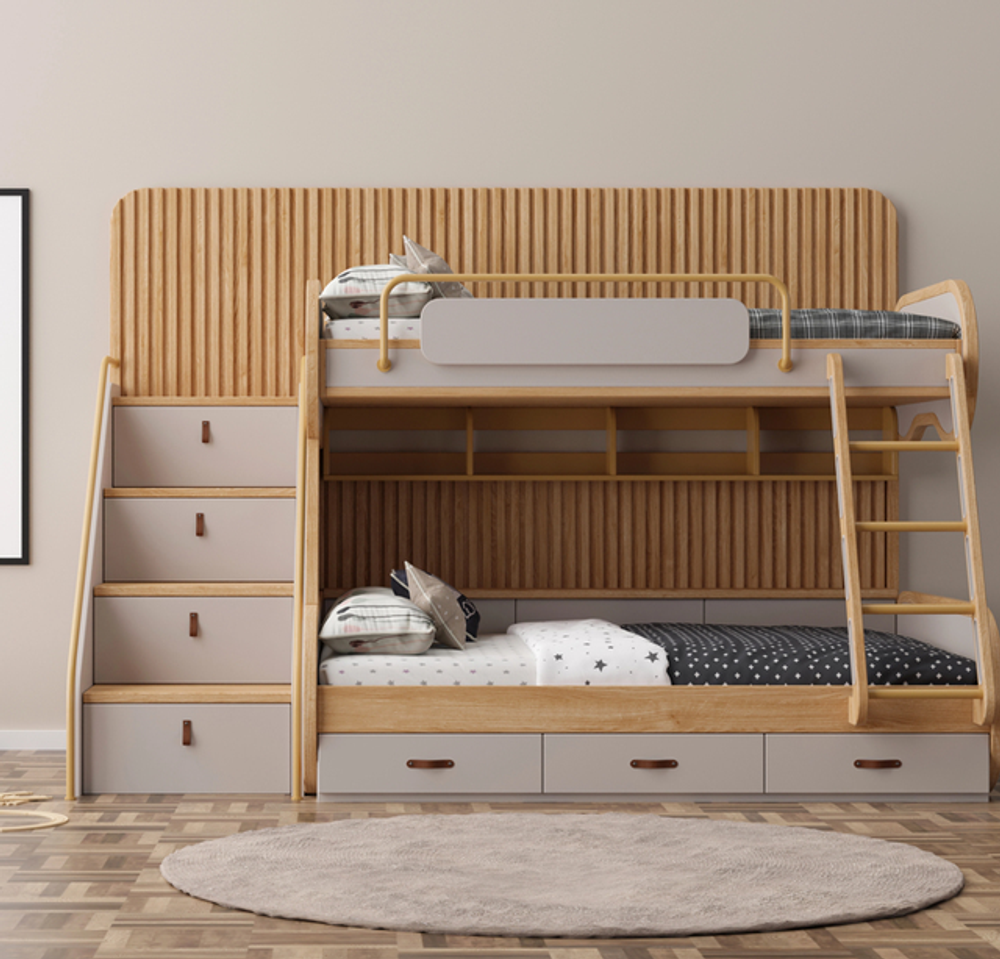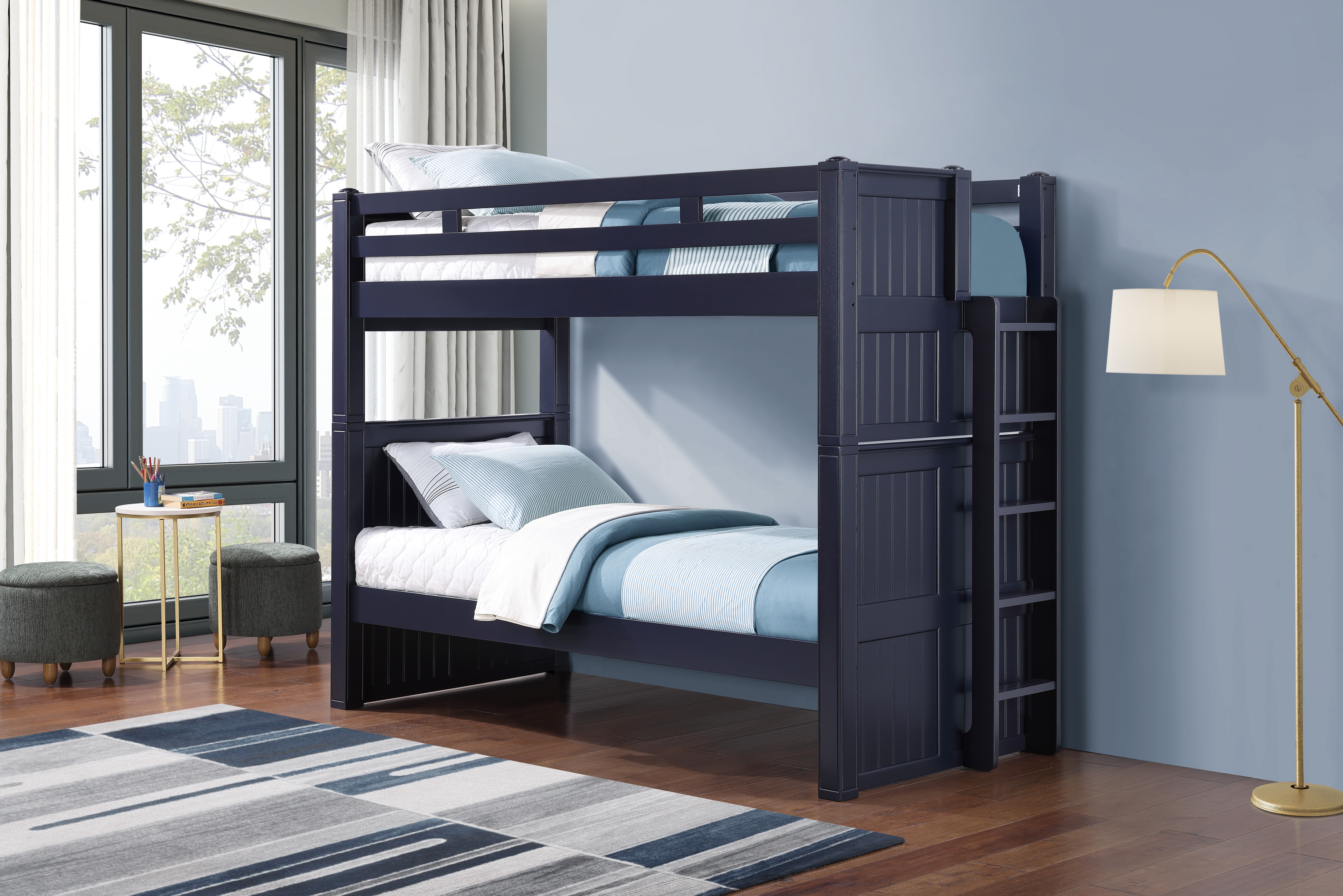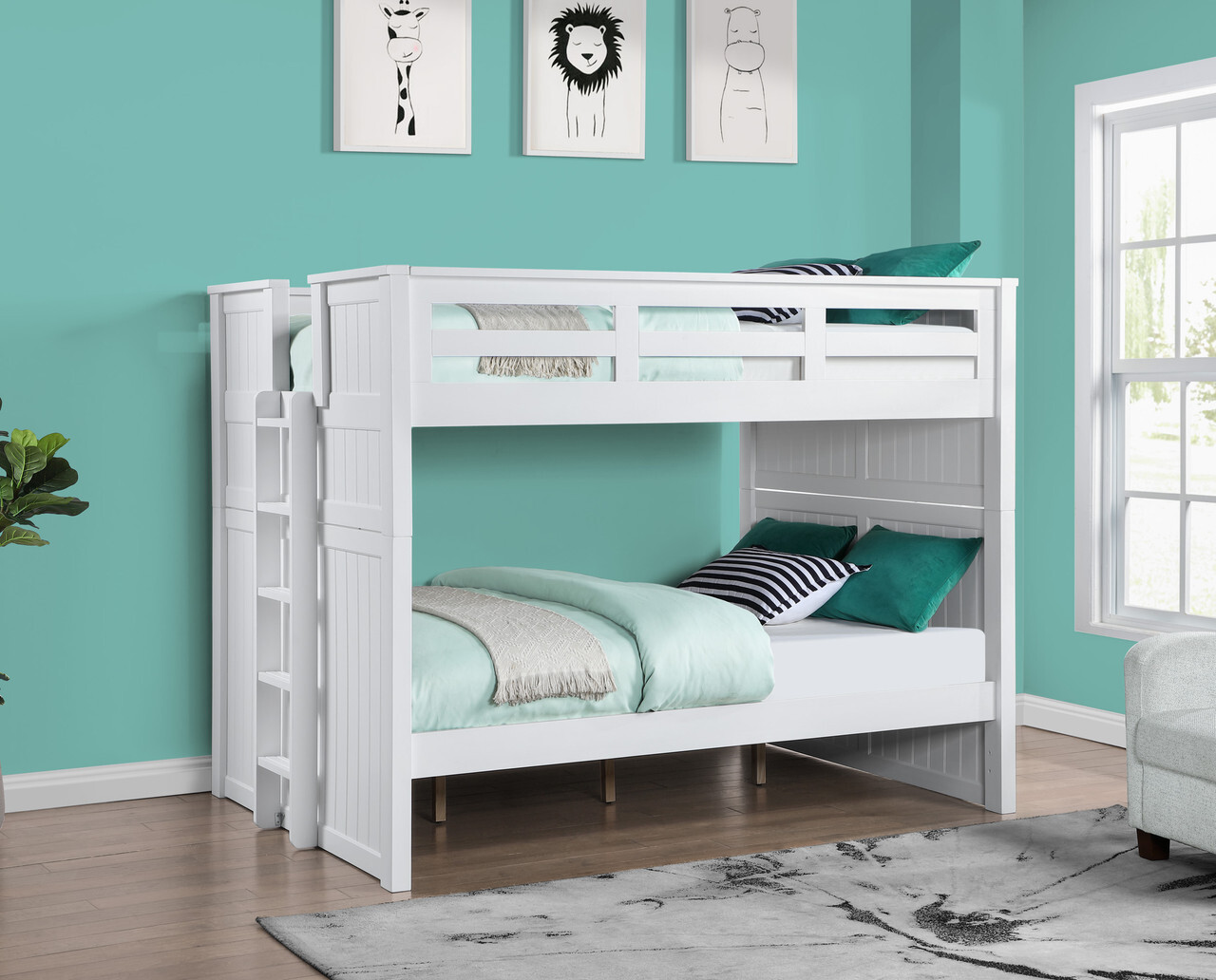How Much Weight Can A Bunk Bed Support?
Posted by UPW on Aug 15th 2025

When choosing a bunk bed, one of the key considerations is its weight capacity. You want to make sure that your new furniture can handle the weight of the sleepers without compromising safety or stability. So, how much weight can a bunk bed support?
The answer depends on several factors, including the materials used, the design, and the bed’s intended use. Understanding these factors will help you make a more informed decision, whether you are purchasing a guest room, vacation home, or family living space.
The Role of Materials in Weight Capacity
Bunk beds are available in various materials, each impacting their ability to support weight. Metal and wood are the most common materials used in the construction of bunk beds, and each has its strengths.
- Metal Bunk Beds: Metal bunk beds are known for their durability and strength. High-quality steel frames often support higher weight limits than wood. These beds are perfect for high-traffic spaces, such as dormitories or vacation rentals, where heavy use is expected.
- Wooden Bunk Beds: While typically not as strong as metal, wooden bunk beds can still support significant weight, especially those made from hardwoods like oak or maple. A well-built wooden bunk bed can handle the weight of multiple adults. This makes it an excellent choice for bedrooms or vacation homes.
Factors That Affect Weight Capacity
Several factors influence how much weight a bunk bed can support. While the material plays a significant role, the bed’s design also affects its durability.
- Design of the Frame: A solid frame with reinforced beams and crossbars will distribute weight more evenly, increasing the bed’s overall stability. For example, a bunk bed with additional central support can hold more weight compared to one with only four corner supports.
- Slat System: The slats beneath the mattress support the weight of the sleeper. Beds with more slats or thicker ones tend to bring better stability and help prevent sagging under pressure.
- Ladders and Guardrails: These features are not just for safety; they contribute to the overall structural integrity of the bed. A poorly designed ladder can strain the frame, reducing the bed’s ability to hold weight over time.
What is the Typical Weight Capacity of a Bunk Bed?
Most adult bunk beds are designed to support between 300 and 600 pounds per bunk. However, there are models that can support more, with some reaching up to 1,000 pounds per level, depending on the construction.
The weight limit also depends on the type of mattress used, as heavier mattresses will add to the overall load.
- Twin Bunk Beds: These usually support 400 to 600 pounds per bunk. This is generally suitable for an adult or two children.
- Queen Bunk Beds: Queen-sized models tend to support 800 to 1,200 pounds. They are ideal for adults who need more space or extra strength. Those with steel frames or reinforced hardwood can support even more weight.
- Triple and Quadruple Bunk Beds: Larger setups designed to sleep multiple people typically come with added structural support. These models often have multiple crossbars and frame reinforcements to manage heavier loads.
The Importance of Distributing Weight Evenly
Overloading one side of the bed or placing heavy objects in the middle can cause instability. It is vital to distribute weight evenly across the bed to maintain its structural integrity and prevent long-term damage to the frame or support slats.
When using a top bunk, make sure the bottom bunk is not overloaded, as this can affect the stability of the whole structure and lead to unwanted shifting or noise. Pay attention to the weight limit specified by the manufacturer and do not exceed it, especially in shared sleeping arrangements or high-traffic environments.
What Happens If You Exceed the Weight Capacity?
Exceeding the weight limit of your bunk bed can cause several problems:
- Structural Damage: If too much weight is placed on the bed, the frame, slats, or support beams can warp or crack. In extreme cases, this may lead to complete failure of the bed, which could result in injuries.
- Increased Wear and Tear: Exceeding the weight capacity accelerates the natural wear and tear of the bed, especially the joints and screws. Over time, this can lead to instability and reduce the lifespan of the bed.
- Safety Risks: For top bunks, overloading can result in wobbling or even collapse. This poses serious safety risks to anyone using the upper bunk.
Choosing the Right Bunk Bed
When deciding which bunk bed to purchase, think about the size and weight of the users, how often the bed will be used, and the available space in your room. For adults or families who expect frequent use, choose a model that comes with strong materials and reinforced construction.
Look for features such as:
- Reinforced beams or extra support bars
- A strong slat system to hold weight evenly
- High-quality hardwood or heavy-gauge steel frames
Why Choose Just Bunk Beds?
Just Bunk Beds brings a variety of adult bunk beds designed with durability and safety in mind. Our beds are made from high-quality materials, whether it’s a sturdy metal frame or a solid wood structure, ensuring that you get the best value for your money.
We understand how important it is to choose a bunk bed that will hold up to daily use while maintaining its integrity and safety. Visit us today to find a bunk bed that suits your needs, and let us help you make an informed decision for your home or rental.
The Bottom Line
Choosing the right bunk bed goes beyond just style; it is essential to find one that can support the weight requirements of your family or guests. At Just Bunk Beds, we offer top-quality options designed to hold substantial weight while maintaining a sturdy, reliable structure.
By paying attention to weight capacity and opting for high-quality, reinforced models, you can rest easy knowing your bunk bed will last for years to come.



